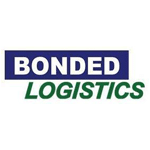Pick Path Optimization for Warehouse Efficiency
Is inefficiency in your warehouse slowing down operations and increasing costs? Discover how pick path optimization can revolutionize order picking by cutting time, reducing costs, and boosting accuracy. This guide provides actionable insights to streamline your processes.
Key Takeaways
- Pick path optimization reduces operational costs by minimizing travel time for order pickers, significantly increasing productivity and customer satisfaction.
- Utilizing algorithms like Dijkstra’s and employing picking strategies such as Zone, Batch, and Wave Picking can enhance efficiency in warehouse operations.
- Continuous improvement and regular KPIs assessment are crucial for sustained pick path optimization, enabling warehouses to adapt to changes and enhance overall productivity.
The Fundamentals of Pick Path Optimization
The main purpose of pick path optimization in warehouse management is to find the optimal route for order pickers, reducing operational costs and improving order accuracy. In most warehouses, order picking activities account for approximately 55% of total operating expenses, making it a vital area for efficiency improvements. Optimizing pick paths significantly enhances customer satisfaction by speeding up order fulfillment times, and picking path optimization plays a crucial role in this process.
Optimal picking paths can dramatically lower operational costs by enhancing efficiency in item retrieval. Cutting down travel time during order picking boosts overall productivity in warehouse operations. This not only increases the number of orders fulfilled per shift but also ensures that even companies with moderate order volumes can benefit from picking optimization.
The biggest factor affecting order fulfillment time is the picking process time. Therefore, the goal of pick path optimization is to minimize the time and effort spent retrieving items. Focusing on these fundamentals helps streamline picking processes, leading to significant productivity gains and cost reductions.
Key Algorithms for Optimal Pick Paths
Achieving optimal pick paths starts with understanding the key algorithms that drive efficiency. The Traveling Salesman Problem (TSP) and the Shortest Path Problem are foundational concepts in path optimization. The TSP addresses the need to find the shortest route to visit multiple warehouse locations and return to the starting point, while the Shortest Path Problem focuses on finding the quickest and cheapest route between the current location and all other locations in the warehouse, often revealing suboptimal travel paths.
One of the most widely-used algorithms for determining the shortest distance from a starting point to multiple other points in a graph is Dijkstra’s algorithm. This algorithm, along with the nearest neighbor approach, is crucial for optimizing pick paths. However, it’s important to note that while the nearest neighbor algorithm is not the most accurate, it can still provide significant improvements in pick path efficiency.
Heuristic methods, such as the Ant Colony Optimization algorithm, mimic the behavior of ants using pheromone trails to find efficient routes. These methods offer workable solutions in warehouse productivity but often come with trade-offs.
Understanding and implementing these algorithms can help warehouse managers identify the most efficient routes, streamline picking processes, and ultimately achieve an optimized pick path.
Evaluating Your Current Picking Processes
Evaluating your current picking processes is crucial before advancing to optimization techniques. Keeping an organized warehouse can significantly reduce search time and minimize inventory errors, thereby enhancing efficiency. Regularly training employees on picking processes not only improves safety but also operational efficiency.
Selecting the right picking strategy directly impacts the efficiency and accuracy of order fulfillment. The specific needs and characteristics of your warehouse operation will dictate which strategy is most suitable. By thoroughly evaluating your current processes, you can identify areas for improvement and set the stage for more advanced optimization techniques.
Impact of Warehouse Layout on Pick Path Efficiency

Efficient order picking begins with a well-planned warehouse layout analysis. Increased order-picking efficiency is often tied to a layout that considers traffic patterns and strategically positions frequently picked items near packing areas. This minimizes retrieval time and effort in order fulfillment, directly contributing to a streamlined picking process.
For instance, a telecommunications firm enhanced its warehouse by integrating optimized picking and slotting strategies, which increased inventory capacity by 30% to 50%. Well-structured and short aisles reduce the time needed for staff to locate and pick products. The design of transverse or center aisles is also crucial for ensuring unobstructed movement within the warehouse.
Both slotting and aisle configuration significantly influence the overall operational efficiency in a warehouse. Optimizing the warehouse layout ensures efficient pick paths, leading to improved productivity and reduced operational costs.
Different Picking Strategies for Optimization
Choosing the right picking strategy maximizes picking efficiency. Improvements in pick rates and efficiency can be achieved through a combination of storage solutions and strategic SKU slotting. There are several different picking strategies to consider, each offering unique benefits depending on your specific warehouse needs.
The following subsections will delve into three primary picking strategies: Zone Picking, Batch Picking, and Wave Picking. Each strategy has its own set of advantages and can be implemented to enhance pick path optimization in diverse warehouse environments.
Zone Picking
Zone picking involves assigning specific areas of the warehouse to order pickers, minimizing unnecessary travel and enhancing efficiency. By dividing the warehouse into sections, each order picker is responsible for a designated area, which significantly reduces travel distances and increases picking speed.
Effective slotting techniques within zones can decrease labor costs by nearly 20% through faster item retrieval. This strategy is particularly beneficial in large warehouses where travel time can be a significant bottleneck in the picking process.
Batch Picking
Batch picking consolidates multiple orders into a single picking run, which significantly cuts down on the number of trips a picker has to make. This method allows workers to collect multiple orders simultaneously, reducing the number of trips to the same storage locations.
Processing several orders at once with batch picking leads to higher efficiency in order fulfillment, handling higher volumes with reduced labor hours and costs. This strategy is ideal for warehouses dealing with large volumes of orders needing quick turnaround times.
Wave Picking
Wave picking organizes the picking process into groups that are released at once, optimizing workflows based on shipment schedules. This method allows for improved management of labor and synchronization with shipping schedules, ensuring that orders are picked and processed efficiently.
By organizing orders into waves based on criteria like shipping dates, wave picking increases overall efficiency and optimizes labor usage. This strategy is particularly useful in warehouses with complex shipping schedules and high variability in order volumes.
Leveraging Technology for Pick Path Optimization

Technology plays a pivotal role in pick path optimization. A warehouse management software system (WMS) automates picking path management, reducing errors and optimizing workflows. Real-time updates and adjustments to picking routes based on current data can be facilitated through these systems, enhancing overall efficiency.
Artificial Intelligence (AI) and machine learning algorithms can further enhance warehouse operations by allowing real-time data-driven decision-making and forecasting demand to optimize inventory management. Autonomous Mobile Robots (AMRs) and Automated Storage and Retrieval Systems (AS/RS) use AI to navigate and optimize their routes for efficient item retrieval and maintenance.
A culture of continuous improvement encourages the integration of new technologies to enhance pick path efficiency. For example, a nutrition and weight loss company managed to double its racking capacity and throughput by implementing a zone-routed pick-to-light system. Leveraging technology is essential for staying competitive and achieving optimal pick path efficiency in modern warehouses.
Establishing KPIs for Measuring Pick Path Efficiency
Key Performance Indicators (KPIs) are essential for measuring and optimizing pick path efficiency. These metrics provide measurable insights that help warehouse managers identify trends and address inefficiencies. Essential KPIs include units picked per hour, order picking accuracy, and average distance traveled during the picking process.
Monitoring these key performance metrics highlights areas for improvement in pick path strategies. Regularly assessing these KPIs ensures that picking processes remain efficient and aligned with overall productivity goals.
Continuous Improvement Strategies
Continuous improvement is the backbone of effective pick path optimization. Regular assessments identify inefficiencies and help adapt to changes in product demand and warehouse layout. Feedback based on KPI outcomes supports continuous improvement among warehouse pickers, fostering a culture of enhanced productivity.
Fostering a culture of continuous improvement promotes openness to change and adoption of innovative solutions. Labor Management Systems (LMS) can identify inefficiencies and guide resource allocation based on performance metrics. This proactive approach ensures that warehouses stay ahead of the curve and continually enhance their picking productivity.
Cadre Technologies: Your Ideal Solution for Pick Path Optimization
Streamline your warehouse operations with Cadre Technologies’ Warehouse Management System (WMS), the ideal solution for achieving pick path efficiency. Designed to reduce travel time, boost order accuracy, and cut costs, Cadre WMS aligns perfectly with the principles of pick path optimization outlined in this guide.
Why Choose Cadre WMS?
- Dynamic Route Optimization: Automatically calculate the shortest and most efficient picking routes to reduce picker travel time and increase throughput.
- Customizable Picking Strategies: Support for Zone, Batch, and Wave Picking enables tailored workflows for your unique operational needs.
- Slotting Optimization: Improve item placement for faster retrieval and smarter travel paths, reducing fulfillment times.
- Real-Time Tracking and Analytics: Monitor key performance indicators (KPIs) like pick rates and order accuracy to drive continuous improvement.
- Integration with Automation: Seamlessly integrate with automation tools, such as pick-to-light systems and AMRs, for enhanced efficiency.
Results You Can Expect
With Cadre WMS, you can achieve:
- Faster Fulfillment: Reduce travel times and complete more orders per shift.
- Lower Costs: Cut labor and operational expenses through intelligent routing.
- Greater Accuracy: Ensure error-free picking and improved customer satisfaction.
Transform your picking processes with Cadre Technologies.
Summary
In summary, mastering warehouse efficiency through pick path optimization involves understanding the fundamentals, employing key algorithms, evaluating current processes, and leveraging technology. Different picking strategies, such as Zone Picking, Batch Picking, and Wave Picking, each offer unique benefits and should be chosen based on specific warehouse needs.
Continuous improvement and regular assessment of KPIs are crucial for maintaining optimal efficiency. By embracing these strategies and learning from real-world success stories, warehouses can significantly enhance their productivity, reduce operational costs, and achieve higher customer satisfaction. The journey to optimal pick path efficiency is ongoing, but with the right approach, the rewards are substantial and well worth the effort.
Ready to optimize your warehouse pick paths? Transform your picking processes with Cadre Technologies. Contact us today to learn how we can help you achieve unmatched efficiency and scalability.
Frequently Asked Questions
What is the main purpose of pick path optimization?
The main purpose of pick path optimization is to determine the most efficient route for order pickers, thereby minimizing operational costs and enhancing order accuracy.
How does warehouse layout impact pick path efficiency?
A well-planned warehouse layout directly improves pick path efficiency by reducing travel distance and time, particularly by placing frequently picked items closer to packing areas. This strategic positioning minimizes unnecessary movement and optimizes overall workflow.
What are some key algorithms used for pick path optimization?
Key algorithms for path optimization include the Traveling Salesman Problem (TSP), Dijkstra’s algorithm, and heuristic methods such as Ant Colony Optimization. Utilizing these algorithms can significantly enhance efficiency in route planning.
How can technology aid in pick path optimization?
Technology can significantly improve pick path optimization through the use of Warehouse Management Systems (WMS), Artificial Intelligence (AI), and Autonomous Mobile Robots (AMRs), which collectively automate processes and streamline workflows to minimize errors. Implementing these technologies leads to more efficient operations and enhanced productivity.
Why is continuous improvement important in pick path optimization?
Continuous improvement is crucial in pick path optimization because it helps identify inefficiencies and adapt to changing warehouse dynamics, ensuring sustained productivity and efficiency. This ongoing process enables businesses to enhance their operations consistently.










